Aural Showdown - 2.1 Multimedia Speakers Shootout
2.1 speaker systems are all the rage these days. Offering the best combination of price and performance, they are the de facto choice amongst most users. Join us as we take an aural journey through seven of the best 2.1 multimedia speaker systems in the market today.
By Kenny Yeo -
Aural Rumble
If you've been a long and loyal reader of HardwareZone, then you might know that it has been eons since we last did a full fledged review of audio speakers. While we've actually brought you speaker articles every once in a while via our quick first-hand experience in our First Looks section, we haven't actually done a full fledged speaker review since the Altec Lansing 621 2.1 speaker system back in January 2003. Well, we're back today in full force with this high-end 2.1 multimedia speaker system shootout.
Incidentally, 2.1 speaker systems are perhaps still the popular choice of speaker configurations in households, and for good reason. For one, they offer the best compromise of space, price and performance. Multi-channel speakers systems such as 5.1 and 7.1 speaker systems are all fine and good if you have the money and space, but more than that, they are also painstaking to setup. First and foremost, positioning is of utmost importance, and so is the shape of the room if you hope to get the best out of your speakers. And do we need to remind you of all those unsightly wires trailing all about? Your wives/girlfriends/mums would definitely not be pleased. There are wireless versions but unfortunately, they are few and far and have their own limitations.

This graph shows how a 7.1 speaker system should ideally be set up. We shudder at the thought of the amount of preparation and cable work involved. (Image from www.thx.com)
Hence, for the rest of us, a 2.1 speaker setup would suffice. It's far easier to setup, and for much less money, a decent set can equally still blow you away. As such, we pulled out all stops to bring you this shootout with seven of the very best 2.1 multimedia speaker systems you can find. If you are hunting for a good PC speaker system, this is one shootout you cannot afford to miss. With offerings from Altec Lansing, Bose, Creative, Edifier, Klipsch, Logitech and Razer, we've got some real heavyweight systems covered in this shootout.
Join us now as we introduce our candidates one by one, but first a quick look at their specifications.
Speaker Model / Specs | Altec Lansing MX 5021 | Bose Companion 5 | Creative Gigaworks T3 | Edifier S730 | Klipsch ProMedia GMX A-2.1 | Logitech Z-Cinema | Razer Mako |
Basic Specs | |||||||
Satellites (per speaker) | 1 x 1-inch tweeter
2 x 3-inch full-range driver | 2 x 2-inch full-range driver | 2 x 2-inch full-range driver | 1 x 2-inch tweeter
1 x 3.5-inch midrange driver | 1 x 0.75-inch tweeter
1 x 3-inch midrange driver | 1 x 1-inch tweeter
2 x 3-inch midrange driver | N.A. |
Subwoofer Driver | 1 x 6.5-inch woofer | 1 x 5.25-inch woofer | 3 x 6.5-inch woofers | 1 x 10-inch woofer | 1 x 6.5-inch front firing | 1 x 8-inch woofer | N.A. |
Power Output | Satellite: 20W x 2
Subwoofer: 50W | N.A. | Satellite: 15W x 2
Subwoofer: 50W | Satellite: 75W x 2
Subwoofer: 150W | Satellite: 14W x 2
Subwoofer: 50W | Satellite: 35W x 2
Subwoofer: 110W | Satellite: 50W x 2
Subwoofer: 200W |
Surround Sound Capability | - | Yes
(TrueSpace surround) | - | - | - | Yes
(SRS TruSurround HD) | Yes
(by virtue of speaker design) |
Inputs / Outputs | |||||||
3.5mm Headphones Jack | Yes | Yes | Yes | Yes | Yes | Yes | Yes |
3.5mm Auxiliary Jack | Yes | Yes | Yes | Yes | Yes | Yes | Yes |
Digital Optical input | - | - | - | Yes | - | - | - |
Digital Coaxial input | - | - | - | Yes | - | - | - |
USB | - | Yes | - | - | - | Yes | - |
Dimensions H x W x D (in mm) | |||||||
Satellites | 132 x 63 x 260 | 225 x 147 x 97 | 93 x 76 x 149 | N.A. | N.A. | 250 x 115 x 112 | N.A. |
Subwoofer | 220 x 310 x 398 | 218 x 173 x 425 | 287 x 236 x 213 | N.A. | N.A. | 292 x 290 x 414 | N.A. |
If you were hoping for more comparisons such as Acoustic Energy's Aego series and others, we did try our best to contact the appropriate distributors, but they didn't have a speaker unit available in time for this article.
Altec Lansing MX5021
Altec Lansing has been in the computer audio business for a good number of years, and many more years in the general audio business. The MX5021, is one of the higher-end speakers from Altec Lansing that we could lay our hands on.
In terms of design, the MX5021 is about as interesting as watching paint peel off a wall. They are black, as most speakers are; and have a smooth lacquer finish, not unusual among speakers as well. Looking past the aesthetics, we found that each satellite has a one-inch tweeter and a pair of three-inch full midrange drivers. The satellites are complemented by a 6.5-inch subwoofer. Apart from the Razer Mako, it is the only other speaker system to be THX-certified. All this sounds decent and impressive on paper, and given Altec Lansing's reputation for making quality audio products, we were having big expectations of it.

The Altec Lansing MX5021 is an unassuming set of speakers, it is neither stunning nor special.
Other accessories that come with the MX5021 include a wired remote control hub and a wireless remote controller. The wired remote control is rather handy as it allows you to adjust volume, bass and treble. It also has LED lights that light up to indicate what levels your controls are at, and that's rather cool. Conveniently, there's also input jacks for headphones and auxiliary devices at the side if the control hub. The wireless remote control, on the other hand, works as it should, but we found the remote control to be really small and thus prone to getting misplaced.
During testing, we noticed that the satellites are physically a little on the thin side and thus prone to being knocked over. The cloth mesh used to shield them is stretched very thin, and looks as if it could be prone to tearing. Caution is advised when handling the satellites and choosing where to place them.

The wired remote control hub of the MX5021 has everything you would need, volume adjuster as well as bass and treble, plus 3.5mm headphones and auxilary outputs.
Bose Companion 5
Audiophiles would need no introduction to the name Bose. Founded by Amar G. Bose, a professor of electrical engineering at the Massachusetts Institute of Technology, in 1964, Bose has been churning out quality audio products ever since.
The Bose Companion 5 we have here is their absolute best 2.1 speaker system. Bose has traditionally been very coy about their product specifications, and the Companion 5 is no different. We know little about the Companion 5 besides its basic specifications, but it looks good, and has a unique TrueSpace surround digital circuitry which attempts to envelope sound around you to create a much wider soundstage (which does work to a certain extent). It is also one of two speaker systems in our shootout which makes use of a USB connection rather than traditional stereo or RCA jacks.
At a recommended retail price of S$749, the Bose Companion 5 is the most costly system in our line-up, and it shows. The speakers, with their aluminum finish, exude sheer class, and certainly looks its cost. The speaker's specs are humble such as its 5.25-inch subwoofer's cone size, but it still delivers in audio quality which is what counts the most. It also comes with a handy wired remote control pod that allows you to adjust volume, a one-touch mute button and has both headphones and auxiliary jacks. You can adjust the level of bass from the speakers, but the good people at Bose have strangely decided to leave the control dial behind the Acoustimass subwoofer unit. This makes adjusting the bass a real chore, but thankfully, the Bose Companion 5 is really swell as we found from our testing and requires little adjustment after the initial setup.

In typical Bose fashion, the Companion 5 is perhaps the most stylish of our pack. Simple and understated, just the way we like it.

The wired remote control hub on the Bose allows you to adjust the system's volume and a light tap on the grey top allows you to instantly mute the speakers. And as you would expect, there are headphones and auxiliary 3.5mm jacks. No bass nor treble adjustment, sadly.
Creative Gigaworks T3
The smallest speaker system of our line-up, this is the Creative Gigaworks T3. Initially, we wondered why Creative called this the Gigaworks T3 given its petite sized, and we were informed that while it may be small on size, it is certainly not small on sound. We shall soon put that to the test.
A key feature of the Gigaworks T3 is its compact yet powerful subwoofer. It achieves this by the way of Creative's unique SLAM (Symmetrically Loaded Acoustic Module) technology, which utilizes a master driver and two pressure drivers. Yup, you read right; the Gigaworks T3 crams three low-range 6.5-inch drivers within its subwoofer enclosure. Creative say that this allows for the quick response of a small driver and the high-output capability and deep bass extension more commonly found in larger ones. And indeed during the test, we found its bass to be powerful and sometimes over-the-top. We'll explain more as we get to the test segment.
The stylish satellite speakers of the Gigaworks T3 are tiny in comparison to the rest, which should be good news for those short of desk space. Like the Bose Companion 5, the Gigaworks T3 gets a wired remote control pod as well, and we think it looks wonderful. It comes with the usual headphones and auxiliary jacks, and allows for volume control. The speakers do allow you to adjust its bass, but again, like the Companion 5, the dial is located at the back of subwoofer unit.

The T3 speakers from Creative are the smallest of bunch, but don't be fooled, it is definitely not small on sound.

The wired remote control hub of the Creative T3 has similar functions as the one from Bose. Really, given the amount of bass the T3 pumps out, the hub should really allow you to adjust bass levels.
Edifier S730
Like some women, there are audiophiles who believe that size matters, and Edifier happens to fall into this group. The S730 2.1 speaker system from Edifier is by far the largest of our line-up. The satellites are huge and the subwoofer is nothing short of simply humongous.
Although Edifier didn't divulge on the weight of the S730's subwoofer unit, we reckon it was more then 10kg. In fact, we had to use a trolley to move it around our lab! It's not large for no reason, however, as inside it lurks a massive 10-inch driver. That's about the normal sized subwoofers used to drive home theatre systems in larger living rooms. The satellites are no pansies either, and were easily one of the larger ones in our pack.
While the Companion 5 and Gigaworks T3 look stylish, the S730, on the other hand, looks very bland. However, it makes up for its uninspired looks with its super cool wired remote control. Unlike the other speakers, whose wired remote controls are simple pod-like devices, the S730 has a full-blown remote control unit that comes complete with a LCD screen. Of all, the S730's wired remote control unit is the most useful as it allows you to tweak almost everything imaginable: volume, bass, treble, balance, the subwoofer's individual volume setting, and even the brightness of the LCD display. Additionally, the S730 also comes with a handy wireless remote control as well.

The Edifier system looks traditional, but check out the size of that subwoofer unit! Inside lurks a giant 10-inch woofer.

For an idea of just how big the subwoofer unit of the Edifier S730 is, we placed it beside the one from Bose, one of the more compact ones of the pack.

The wired remote control unit on the Edifier S730 allows you to tweak anything from volume to bass to balance, and it sports a LCD display, which is really nice and useful. There's also a 3.5mm stereo jack for headphones on its right.
Klipsch ProMedia GMX A-2.1
If you are not familiar with the brand Klipsch, don't worry, because their last new foray into the realm of 2.1 speaker systems was back in 2003 with the ProMedia GMX A-2.1. The company, however, with their wide range of home theater systems, is synonymous with hi-fi, especially amongst the home theater enthusiasts. On a side note, they have also recently made forays into the world of headphones, with their Custom and Image lines of in-ear monitors.
Designed for computer users who demand true high-fidelity audio, the ProMedia GMX A-2.1 looks unique, to say the least. The satellite speakers look like turbines from airplanes, and our opinion of them was divided; some liked it, while others thought it looked absolutely awful. The subwoofer unit, thankfully, or not, looks more traditional and is only slightly larger than the Gigaworks T3 subwoofer. A nice touch about the ProMedia GMX A-2.1 is that its satellites are the only ones of the bunch that can be tilted.
The ProMedia GMX A-2.1 shows its age when we uncovered its wired remote control unit. No fancy lights or touch-sensitive controls, it only has two simple dials for you to adjust the volume and bass. It was also the only system to have all the jacks congregate at the wired remote control unit, which could result in a desktop cluttered with wires. But how did it fare in actual usage when properly set up? Stay tuned shortly for our results breakdown on the following pages.

The looks of the Klipsch ProMedia GMX A-2.1 is unique, to say the least. You either adore it or loathe it.

The classy looking satellites of the ProMedia GMX A-2.1 look like turbines. Our thoughts of them were divided squarely down the middle; some liked it while others thought it looked awful. But it was unique in that it allows you to tilt the satellites for finer positioning adjustments. Sounds great too from our tests.

The Klipsch ProMedia GMX A-2.1 was first made available in 2003, and it shows. The wired remote control hub sports dials that look like they were from another era.
Logitech Z-Cinema
After the Edifier S730, the Logitech Z-Cinema was the second-largest speaker system in our line-up. Almost a match for the S730 in terms of physical presence, the Z-Cinema's subwoofer unit houses a formidable 8-inch woofer and is more than capable of causing a few backaches should you try to move it without assistance. The satellite speakers are no slouch either, and those with limited desk real estate should look elsewhere. Apart from the Bose, it is the only other system to make use of a USB connection for audio connectivity.
In fact, the Logitech Z-Cinema seems more at home in a living room than at a computer desk. It does away with a wired remote control unit by having a wireless remote that allows you to adjust and tweak almost anything. It will even allow you to play around with Windows Media Centre, should you have it installed on your system. Sick of music and want to watch some movies instead? Want the video to be in full-screen? The wireless remote allows all that and more. The Logitech Z-Cinema is also equipped with SRS TruSurround HD audio circuitry that emulates immersive surround sound experience without having the need for all those extra speakers and cabling. This is a very convenient feature for those who are short of space and yet would like to have pseudo-surround sound. These functions add to the cost of the speakers systems and it certainly shows as the Logitech, Bose and Razer who all have some form of surround sound technology, also cost quite a bit more than the other speaker systems.
While all that might certainly sound fun and nifty, there are a few shortcomings. Most glaring of all is that the wireless remote is the only way to adjust the speakers' volume, apart pulling up volume control panel in Windows. This is both troublesome and silly if you happen to be using the speakers right where your PC is.

The Logitech Z-Cinema is a pretty hefty set, with its subwoofer almost a match for those from Edifier.

The Z-Cinema doesn't come with a wired remote control hub like the other systems do. However, there are 3.5mm stereo jacks for headphones and aux outputs at the side of the right speaker.

The left speakers include a display which allows you to see your volume, bass and treble levels.
Razer Mako
Easily the most stunning, unique and queerest looking of the pack is the Razer Mako. The speakers sport the blackest of blacks and their unique dome design makes them the most stylish speakers in our pack. The Mako is also THX-certified and is also perhaps one of the more technologically advanced speaker system on display here. Boasting features such as THX Ground Plane and THX Slot Speaker technologies, the Mako aims to reduce distortion by firing sound downward and creating an omni-directional soundstage.
If you noticed the specs of the Razer Mako from our table comparison, it has really higher power output ratings and you would think that it would blow its competition away in sound delivery and volume. However due to its downward-firing speaker design that uses the surface to bounce the audio off, this requires a lot more power to be able to deliver a certain volume than that of traditional speaker designs that fire straight at you. So don't be fooled by the overall power ratings of the Razer Mako, but suffice to say that you will be pleased at its capability as we were during the testing. Additionally, by virtue of its speaker design, the Razer Mako is able to simulate surround sound, so that's an added bonus for this high-end 2.1 speaker system.
The wired remote control unit is a flat disc, and like the better thought-out speaker systems, the hub also sports headphones and auxiliary jacks. The disc-shaped hub has a display that glows blue, telling you even in the dark of night, your source, volume and bass levels. The controls to adjust these levels are touch-sensitive and you swipe them to make the required changes. Take note though, the controls aren't as intuitive and responsive as we'd like it to be because when we asked our other team members to give it a trial, some found it easy to use while others had a little trouble to manipulate the touch-sensitive controls.
With its unique looks and design, we suspect this will be the speakers of choice for angst-ridden, emo-soaked teenagers. But how does it sound? We shall soon find out.

Perhaps the most imposing and unique looking of the bunch, this the Razer Mako.

Razer products are the epitome of "gamer cool", and the disc-shaped wired remote control hub of the Mako shows. Very pretty to look at in the dark.

The Razer Mako featuring THX Ground Plane and THX Ground Slot technology, fires sound downwards creating an omni-directional soundstage.
Test Setup
For the purpose of this test, we'll be using a Shuttle XPC SD37P2 (Intel 975X) SFF PC equipped with an Auzentech X-Fi Prelude soundcard. All speakers, with the exception of Bose Companion 5 and Logitech Z-Cinema (both make use of USB connectivity), was fed with signals from this sound card. They were plugged into our test system by the way of a standard 3.5mm analog audio output jack.
To fully and accurately ascertain the performance of the speakers, we subjected them to four main tests. First, they were tested for their abilities in playing music, and this was broken down further into two sub-categories: CD and MP3. Next, were movies, and lastly, games.
For music, we played a variety of different tracks to see how the speakers would perform across different genres such as acoustic, jazz, orchestral and trance. In movies, we were interested in the overall experience. Was dialogue clear? Were the sound effects apparent? And does it feel like a cinematic experience? Likewise in games, we were interested to find out if the speakers were capable of enhancing the gaming experience. Did it immerse us into the game atmosphere, and did we feel like we were 'experiencing' the game, instead of merely playing. In short, what were interested in was how the speakers made us, for lack of a better word, 'feel' while we were playing the test materials.
Of course, different people have different musical and sonic tastes. Some are bassheads while others are treble freaks, so your preferences with the speakers may vary. Note that we did not enable any surround sound features on the speakers to keep the comparison fare across the board. Besides, those features were only pseudo-surround and not real surround sound from multiple speakers.
The complete list of testing material is as follows:
CD Testing:
- Pod Race Scene from Phantom Menance
- Tyrannosaurus Rex Sound Effects from Jurassic Park
- Theme from Jurassic Park
- Apollo 13 Lift-off Sound Effects
- Theme from Cutthroat Island
- Fanfare for Louis, performed by the Dallas Wind Symphony
MP3 Testing:
- Hotel California - Eagles
- Sail on Soothsayer - Buckethead
- Melt My Heart to Stone - Adele
- Elements of Life - Tiesto
DVD Testing:
- Lord of the Rings - (Starting sequence, Balin's Tomb & Bridge of Khazad-dum)
- Swordfish (Starting sequence)
Game Testing:
- Far Cry 2
CD Testing Results
Speaker Model / Test Tracks | Altec Lansing MX 5021 | Creative Gigaworks T3 | Bose Companion 5 | Edifier S730 | Klipsch ProMedia GMX A-2.1 | Logitech Z-Cinema | Razer Mako |
Pod Race Scene from The Phantom Menance | 3.5 | 4.5 | 4.5 | 3.5 | 5 | 5 | 4.5 |
T-Rex SFX | 3 | 5 | 4.5 | 3.5 | 5 | 5 | 5 |
Theme from Jurassic Park | 3.5 | 4.5 | 5 | 4 | 5 | 4.5 | 5 |
Apollo 13 SFX | 3 | 4.5 | 4.5 | 3.5 | 4.5 | 4.5 | 5 |
Theme from Cutthroat Island | 3.5 | 4 | 5 | 4 | 5 | 4.5 | 5 |
Fanfare for Louis | 4.5 | 4 | 5 | 3.5 | 4.5 | 4 | 4.5 |
Overall | 3.5 | 4.5 | 4.5 | 3.5 | 5 | 4.5 | 5 |
The first thing we noticed about the Altec Lansing MX5021 was its poor bass response. This is very unlike Altec Lansing speakers of old, which were known for its thunderous bass. The bass felt muted and subdued, as if something was stuck in the subwoofer unit's air ports (which we did check). This really affected the MX5021's performance, as bass is an integral part of any musical experience as it gives a sense of rhythm and beat. The mediocre bass also made the MX5021 sound lightweight. Fortunately, it redeemed itself, if only a little, as its mids and highs were bright and smooth.
The Bose Companion 5 sounded downright impressive. Its audio output was the sort that demands your full attention. Playing the Theme of Jurassic Park immediately conjured scenes of grandeur and majesty, as the Bose was able to produce an amazingly wide soundstage. For bassheads, however, the neutral setting on the Companion 5 might not be sufficient. Luckily, maxing out the bass compensation dial did not noticeably degrade the quality of the bass output, as the engines on the Pod Race scene continued to sound clear but with a deeper burble this time round.
The Creative Gigaworks T3 might be small in size, but it is definitely no featherweight when it comes to sound. We were pleasantly surprised when we played the Pod Race scene as the engines had a wonderful deep and satisfying burble, and the Tyrannosaurus Rex sound effects were magnificent. Stereo separation from the satellites was top-notch as we could easily make out the pod racers as they zipped past us. The Gigaworks T3 also sounded grand on the two orchestral pieces, Theme from Jurassic Park and Theme from Cutthroat Island, although perhaps a little less so compared to the Bose Companion 5.
The polar opposite of the Gigaworks T3, the Edifier S730, though big in size, was surprisingly subdued throughout the tracks. We expected big rumbles from the subwoofer, but was instead treated to a careful and cautious performance. Judging from its immense size, we thought it would absolutely blow us away in the Tyrannosaurus Rex sound effects test, but we found it to be strangely average. However, the S730 was able to go up to exceptionally loud volumes before we even detected any hint of cracking and distortion.
Listening to the Klipsch ProMedia GMX A-2.1 for the first time, we found that it sounded very similar to the Gigaworks T3. Playing the Pod Race Scene and Apollo 13 sound effects tracks, we found the sound to be full-bodied, and the bass to be deep and satisfying. The Tyrannosaurus Rex sound effects sounded atmospheric and exciting, but Fanfare for Louis sounded a little too bright, making it slightly unpleasant.
The Logitech Z-Cinema backed up its large-sized speakers with an equally large sound. It's not as refined as the Bose, but it sounds dramatic and full-bodied. This allowed it to excel on nearly on all the tracks here. Its only downfall was on the classical piece Fanfare for Louis, as it sounded dull and out of touch, like a nuclear scientist suddenly asked to cook dinner for a panel of food connoisseurs. It is perhaps more suited towards playing faster, heavier tracks.
Last, but definitely not least, we come to the Razer Mako. Razer has a reputation for churning out quality products, and we are glad to say that the Mako has followed that tradition. Its mids and highs were butter smooth, but it was its reproduction of the lower frequencies that blew as away. It was heavy on, but the bass was extremely well-controlled. The deep rumble of Apollo 13 lifting out was more than satisfying, as was the primal roar of the Tyrannosaurus Rex. However, we found its special downward firing satellites to be less well equipped at producing an accurate stereo effect. The sounds of pod racers zipping past as us seemed less apparent and focused, and this is probably due to the fact that the Mako strives for an omnidirectional sound output.
MP3 Testing Results
Speaker Model / Test Tracks | Altec Lansing MX 5021 | Creative Gigaworks T3 | Bose Companion 5 | Edifier S730 | Klipsch ProMedia GMX A-2.1 | Logitech Z-Cinema | Razer Mako |
Hotel California - Eagles | 3.5 | 4 | 5 | 4 | 4.5 | 5 | 4.5 |
Sail on Soothsayer - Buckethead | 4 | 4.5 | 5 | 3.5 | 5 | 4.5 | 4.5 |
Melt my Heart to Stone - Adele | 4 | 4.5 | 5 | 4 | 5 | 5 | 5 |
Tiesto - Elements of Life | 2.5 | 3.5 | 5 | 3.5 | 5 | 5 | 5 |
Overall | 3 | 4 | 5 | 3.5 | 4.5 | 4.5 | 4.5 |
The Altec Lansing MX5021 speakers' soft bass was painfully apparent on Tiesto's Elements of Life, as it made the track sound lethargic. Even after maxing out the bass output using the wired remote control, the track continued to sound flat and unexciting. We experienced the same feeling on Hotel California. It sounded much better, fortunately, on the instrumental Sail on Soothsayer and the jazzy Melt my Heart to Stone. Vocals, especially, seem to be the MX5021's strongest point, as Adele sounded smooth and warm.
The Bose Companion 5 really shone when it came to MP3 testing, as it showed itself to be exceptionally capable when it came to music. Hotel California was pure ecstasy, as the drums were punchy and tight, and we could almost make out the individual guitar strings being plucked and strummed. The same goes for Buckethead's Sail on Soothsayer. The Companion 5 also made the vocals of Adele sound honey-smooth, and on Tiesto's Elements of Life, it fully demonstrated its awesome bass control, albeit being a little light on bass. Considering its 5.25-inch subwoofer unit, Bose has done a great job in tuning it to its maximum potential.
While the Creative Gigaworks T3 sounded great on our CD test tracks, it started to show some shortcomings. The most glaring of all, is its bloated bass. On Hotel California, the drums sounded it had punch, but it wasn't tight and it sounded airy, as if Don Henley was hitting a giant air balloon. This was also apparent on Elements of Life, where the bass was overwhelming and muddy. We had to adjust the bass levels downwards to get the best out of it. This looks like it's squarely the design choice of using triple woofers in the subwoofer unit, thus a bass level setting for one type of usage might not bode well with another. Elsewhere, fortunately, the Gigaworks T3 sounded open and smooth.
The Edifier S730 sounded very average, despite its not-so-average size. That is not to say that it is bad, but it doesn't make you stand up and take notice. We also noted that it sounded somewhat grainy on Sail on Soothsayer, taking away some of the smoothness of Buckethead's fluid guitar playing. This graininess replicated itself too when we put on Adele, as she didn't sound as smooth. Finally, Elements of Life was sorely lacking in bass, but when turning up the subwoofer volume and bass levels degraded the quality of bass quite substantially.
The Klipsch ProMedia GMX A-2.1 continued its fine showing here, proudly showing off its audiophile roots. Overall, we thought it sounded very much like the Gigaworks T3, but with far better bass control. The bass slam from the opening sequence of Hotel California was tight, unlike that of the Gigaworks T3, and it has very smooth mids and highs. In fact, it was as good as the awesome Bose Companion 5, but was let down (comparatively), only very slightly, in terms of overall sound refinement and soundstage.
Not to be outdone, the Logitech Z-Cinema proved itself to be a capable performer here as well. It handled vocals beautifully, but where it really shone was on Tiesto's Element of Life. Its powerful sound and awesome bass really makes you feel like getting up on your feet and dance.
The Razer Mako is yet another outstanding performer. It sounds impressive, but slightly less so than the Bose. It is a good match, but loses out ever so slightly as the Bose was crystal clear and smooth. But where it loses to the Bose in terms of clarity and precision of the mids and highs, it makes up by being the absolute King of bass. At neutral, the bass was already sufficient and it was punchy and supremely tight. Maxing out the bass volume degrades the quality only by the tiniest bit.
Movies Testing
Speaker Model / Test Discs | Altec Lansing MX 5021 | Creative Gigaworks T3 | Bose Companion 5 | Edifier S730 | Klipsch ProMedia GMX A-2.1 | Logitech Z-Cinema | Razer Mako |
Lord of the Rings | 4 | 4.5 | 5 | 4.0 | 4.5 | 5 | 4.5 |
Swordfish | 3.5 | 5 | 5 | 4.5 | 4.5 | 4.5 | 4.5 |
Overall | 4 | 4.5 | 5 | 4.5 | 4.5 | 5 | 4.5 |
The weak low frequencies of the Altec Lansing MX5021 did not help it at all when we ran Lord of the Rings and Swordfish. Although dialogue was clear, the movie lacked that special cinematic feel. That sense of excitement and drama was somehow missing. This was most obvious in Swordfish, where the explosion scene was not as satisfying as we thought it would be.
The performance of the Bose Companion 5 was superb thanks to its wide soundstage, which really makes you feel like you are in a cinema. Overall, what stood out were the clarity of the dialogue and the sense of depth of the sound. In Lord of the Rings, we could easily make out the arrows swishing pass us, and were deeply impressed with the clanging of swords.
The Creative Gigaworks T3 lost some of its brilliance coming to movies. The brightness of its satellites, so apparent on music tracks, couldn't lend themselves to movies. The impressive bass on the Gigaworks T3 did help it sound good especially when there were clashing of swords and explosions, but overall, it didn't sound as dramatic as the more full-bodied sounding systems such as the Logitech Z-Cinema and Razer Mako.
The grainy sounds of the Edifier S730, surprise, surprise, actually made it very suitable for movies. The opening sequence of Swordfish, for example, where John Travolta expounds on the modern day dilemma of American cinema, was a joy as the graininess of the sound helped enhance the quality of the dialogue. It sounded more 'cinema-like'. Positioning and stereo effects of the S730 was also another bright point as we could distinctly hear the ball bearings and glass shards from the explosion in the opening sequence of Swordfish swish past us.
The Klipsch ProMedia GMX A-2.1 was one of the top performers here, as its excellent reproduction of mids and highs meant that dialogue was crystal clear, whereas its booming bass ensured thunderous rumbles from explosions. We thoroughly enjoyed watching the testing sequences with the ProMedia GMX A-2.1.
The Logitech Z-Cinema lives up to its name as it performs very well when we played movies. Dialogue was clear and crisp, as were the sword fight scenes. The clashing of swords resulted in resounding clangs, and the sound of mace and clubs striking flesh was meaty and juicy. In Swordfish, the opening dialogue sounded a little veiled, but the explosion has lots of oomph.
The Razer Mako with its big sound was yet another top performer in our movies segment. Its awesome bass made the orc drums sound absolutely wonderful. It also made the growls of the rampaging cave troll even more menacing. On Swordfish, its massive bass lends itself spectacularly to the explosion scene at the end of the opening sequence. Our labs shook as if we were struck by an earthquake.
Game Testing
Speaker Model / Game Test | Altec Lansing MX 5021 | Creative T3 | Bose Companion 5 | Edifier S730 | Klipsch ProMedia GMX A-2.1 | Logitech Z-Cinema | Razer Mako |
Far Cry 2 | 3 | 5 | 4.5 | 4 | 5 | 5 | 5 |
The Altec Lansing MX5021 did itself no favors with its weak-sounding reproduction. Its poor bass furthermore made it sound even more lackluster, as the explosions sound muted and lacked kick, as were gun shots. Nevertheless, it must be said that it did a pretty good job of the various jungle sounds. The chirping of birds sounded quite good.
The Bose Companion 5, with its refined sounds, sounded a tad out of place when matched with the furious gun fights of Far Cry 2. It sounded slightly lightweight, but not to the extent of the Altec Lansing MX5021. Fortunately, turning up the bass level on the subwoofer unit did help things, adding more oomph to gun shots. Its strong point, however, is its wide soundstage, which really made us feel as if we were in a jungle.
The bright and wild bass of the Creative Gigaworks T3 works excellently in games. The jungle environment effects were bright and sounded lively, while gun fights were really fun. The bloated, and out of control bass lends a chaotic voice to gun fights and ups the fun factor considerably.
The Edifier S730 did well in this segment too, especially with the volume and bass levels turned up. But overall, didn't sound as fun or involving as the Gigaworks T3.
The Klipsch ProMedia GMX A-2.1 is proving itself to be a competent all-rounder as it provided an immersive gaming experience with Far Cry 2. Its great all-round sound meant that the jungle effects were spot on, whereas its booming bass ensured involving gun fights.
The Logitech Z-Cinema performed commendably with Far Cry 2 as well. It has great presence, especially in the gun fights, but was lacking that little bit of sparkle when we were just walking around the jungles, as the environment sound effects were not as impressive sounding as say, the Creative and Klipsch systems. It's difficult for any one speaker to impress on all grounds but as you can, each speaker system has their own bias and specialty.
Won't it be amusing if Razer, a brand so synonymous with all things gaming, produced speakers that sounded terrible playing games? Fortunately, this wasn't the case as the powerful subwoofer unit from the Razer Mako made Far Cry 2 an involving and immersive experience. Gunning down enemies has never been this fun, with each gun shot producing a deep satisfying 'rat-a-tat' from the speakers.
And the Winner is...
This is the most comprehensive shootout we've ever done for PC peripherals. Not only that, this is also one of the toughest, as all the candidates represent the best each manufacturer has to offer. As such, it was difficult to come to a decision. This is further exacerbated by the fact that when it comes to sound, one man's meat can be another man's poison. And everyone has difficult opinion on what makes an enjoyable auditory experience. To this end, we tried being as neutral as we could, but there are certain signatures that we do prefer more so over others, and that is inevitable.
Speaker Model / Test Type | Altec Lansing MX 5021 | Creative Gigaworks T3 | Bose Companion 5 | Edifier S730 | Klipsch ProMedia GMX A-2.1 | Logitech Z-Cinema | Razer Mako |
CD | 3.5 | 4.5 | 4.5 | 3.5 | 5 | 4.5 | 5 |
MP3 | 3 | 4 | 5 | 3.5 | 4.5 | 4.5 | 4.5 |
Movies (DVD) | 4 | 4.5 | 5 | 4.5 | 4.5 | 4.5 | 4.5 |
Games | 3 | 5 | 4.5 | 4 | 5 | 5 | 5 |
Overall | 3 | 4 | 5 | 3.5 | 5 | 4.5 | 5 |
If we were to rank the speakers based on raw performance, we can say that there are a few tiers. The Bose, Klipsch and Razer systems are right at the top, thanks to their all-round capabilities and refinement. Of the three, the Bose Companion 5 was the most controlled and refined, the audiophile's choice and thus we've awarded it our Editor's Choice award. The Klipsch was strong and competent throughout, never weak in any area; and the Razer was the most fun sounding, thanks to its thumping bass. So each speaker set has its own niche that it excels in.
A tier below would be the duo of Creative Gigaworks T3 and Logitech Z-Cinema. The Gigaworks T3 would have fared much better if they could bring its bass under control. At default, it was really overwhelming in most cases. The Z-Cinema from Logitech, on the other hand, was fine all around, but lacked sophistication and felt aggressive and in-your-face. It's great for action movies, dance tracks and rock, but felt overpowering when it came to more delicate material like instrumental music and movies heavy with dialogue.
The Edifier S730 occupies a tier lower all on its own as it was a rather average sounding system. Unlike the Gigaworks T3 and Z-Cinema, which had their moments of brilliance, the S730 was mostly mediocre throughout. It sounds decent, but against opponents like these, merely decent isn't going to suffice.
And rounding the pack is the Altec Lansing MX5021. We cannot stress enough, but we were perplexed as to how a system, armed with a sizeable subwoofer, could sound so lightweight with poor bass. As much we've been despising its bass output, it's still better than speakers you would find half its price but as this shootout compares the best of the best in the 2.1 speakers segment, it wasn't able to compete convincingly despite its THX certification (which no doubt makes the speakers even more expensive).
However, if we were to pick an overall winner, it would have to be the Klipsch ProMedia GMX A-2.1. For S$749 and S$629, you would expect the Bose Companion 5 and Razer Mako to sound out of this world, but at just S$279, the Klipsch costs only a fraction of the other two systems and is actually equally good. It may not be as refined as the Bose, nor as stunning to look as the Razer, but it does what it does extremely well and for a relatively reasonable price. Of course, that is not to say that the Bose and Razer are inferior. They have their strong points too; the Bose is musically astute whereas the Razer sounds best playing dance tracks and games, but at that price point, it is our opinion that the Klipsch ProMedia GMX A-2.1 represents the best value for money and the best overall 2.1 multimedia speaker system in this shootout.
Attributes / Speakers | Performance | Physique | Value | Price |
Altec Lansing MX5021 | 3 | 3 | 3.5 | S$220 |
Bose Companion 5 | 5 | 4 | 4 | S$750 |
Creative Gigaworks T3 | 4 | 4.5 | 4.5 | S$299 |
Edifier S730 | 3.5 | 4 | 3 | S$450 |
Klipsch ProMedia GMX A-2.1 | 5 | 4 | 5 | S$279 |
Logitech Z-Cinema | 4.5 | 3.5 | 4 | S$500 |
Razer Mako | 5 | 4.5 | 4 | S$629 |
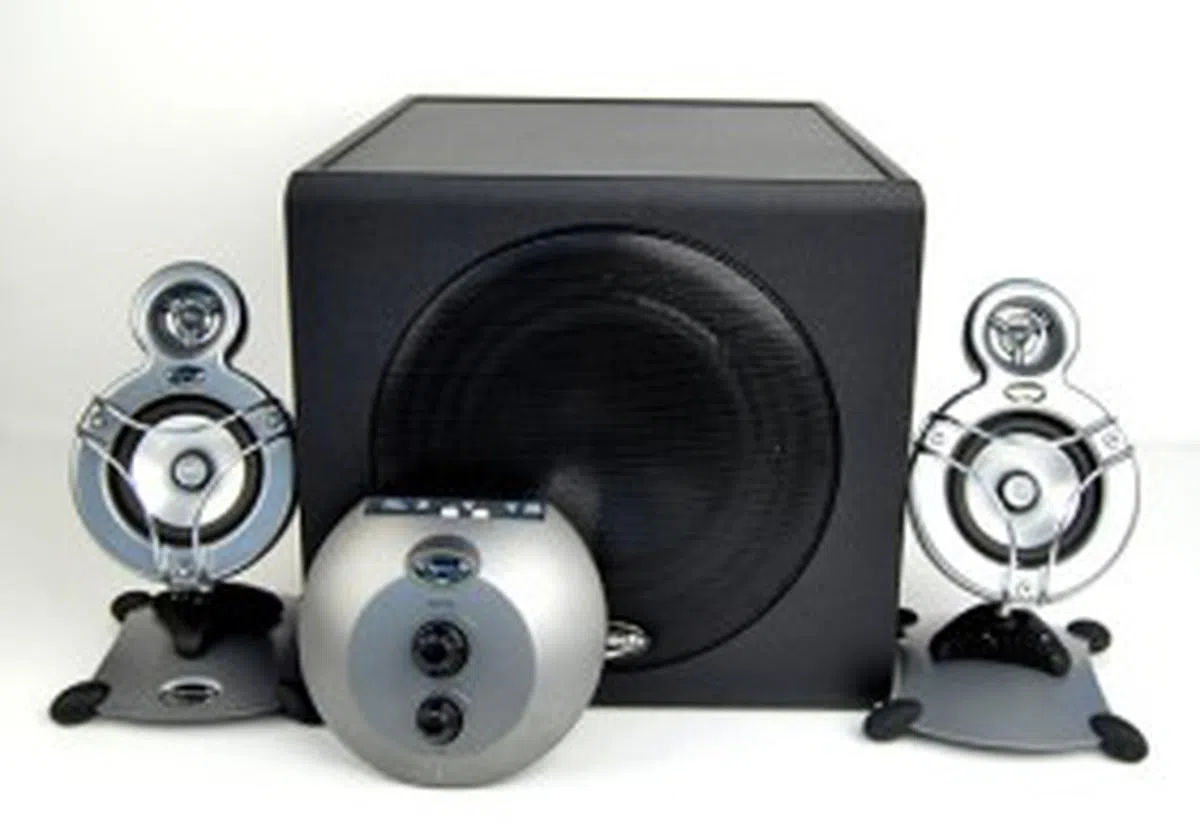 | |
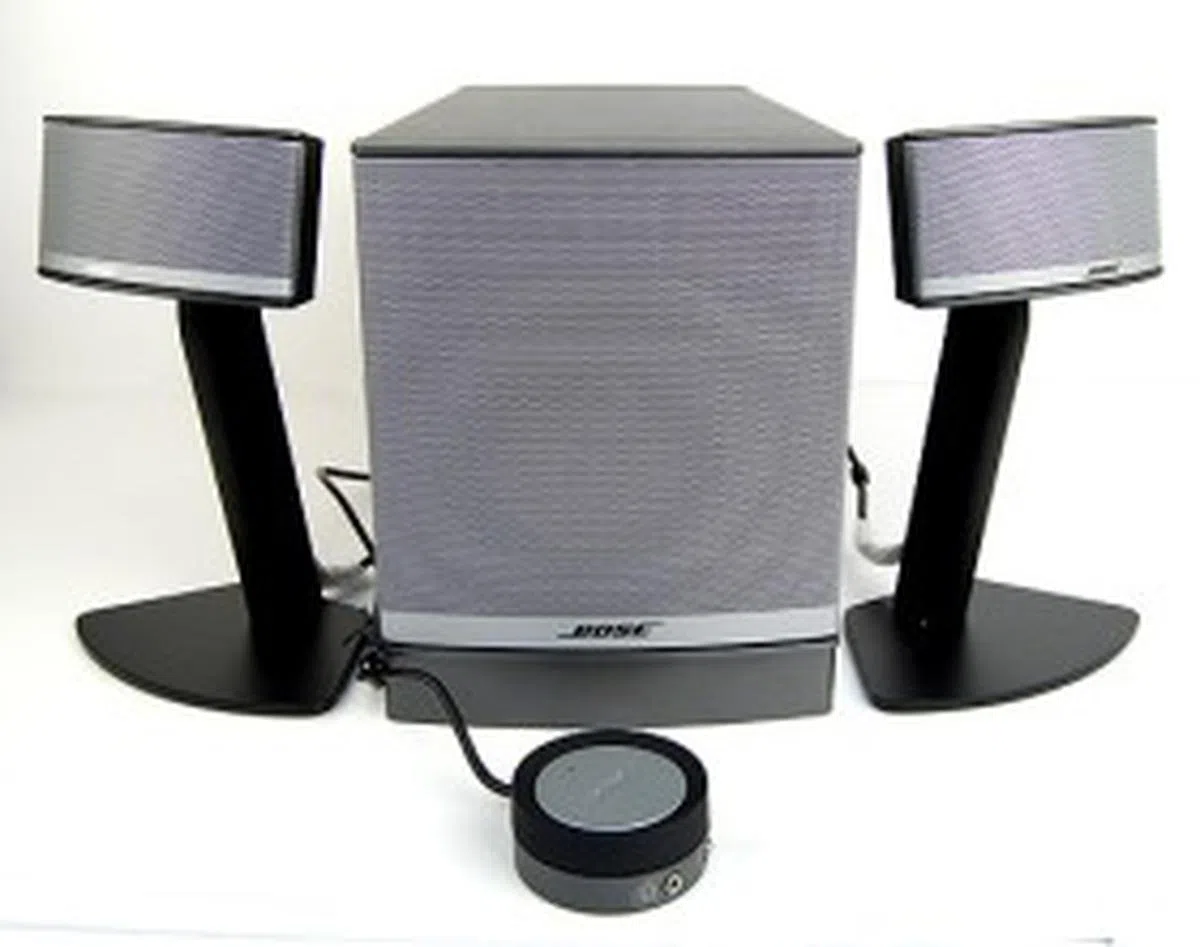 | |
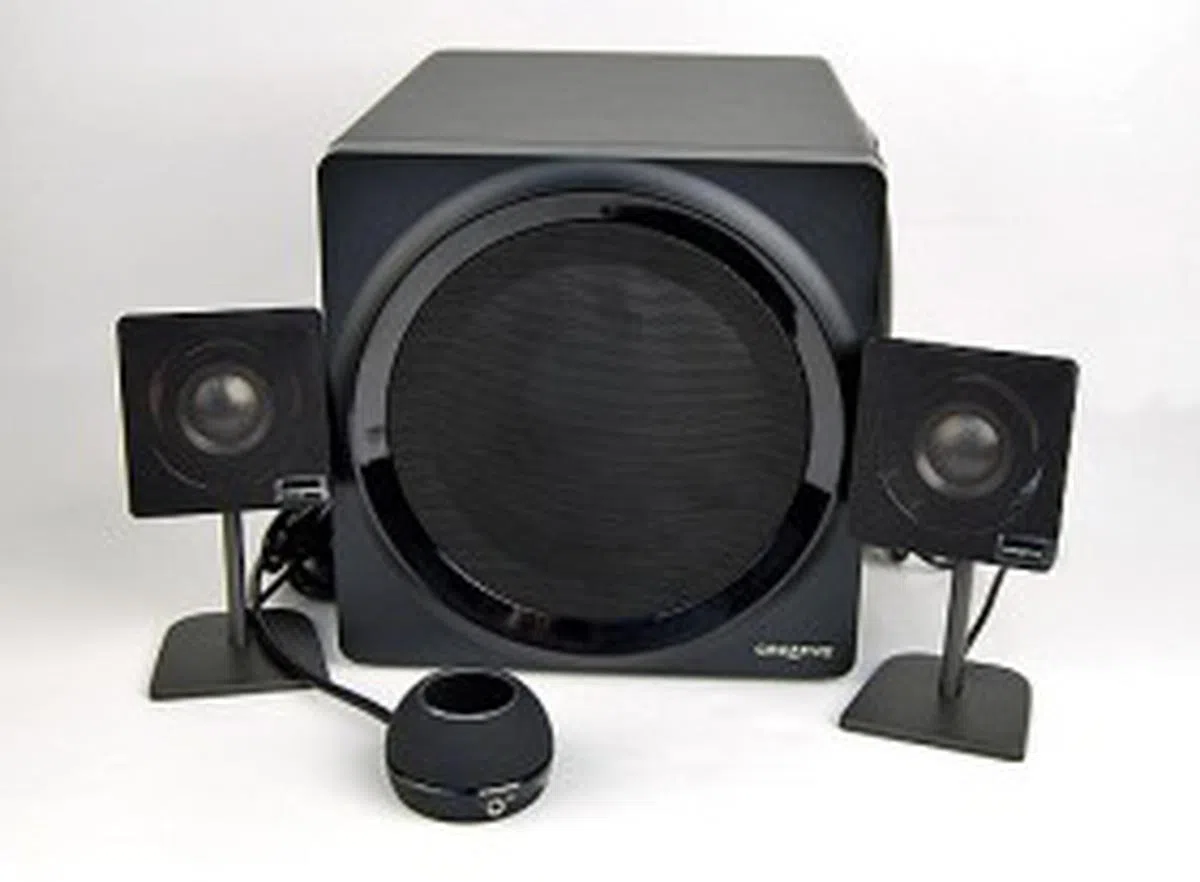 |  |
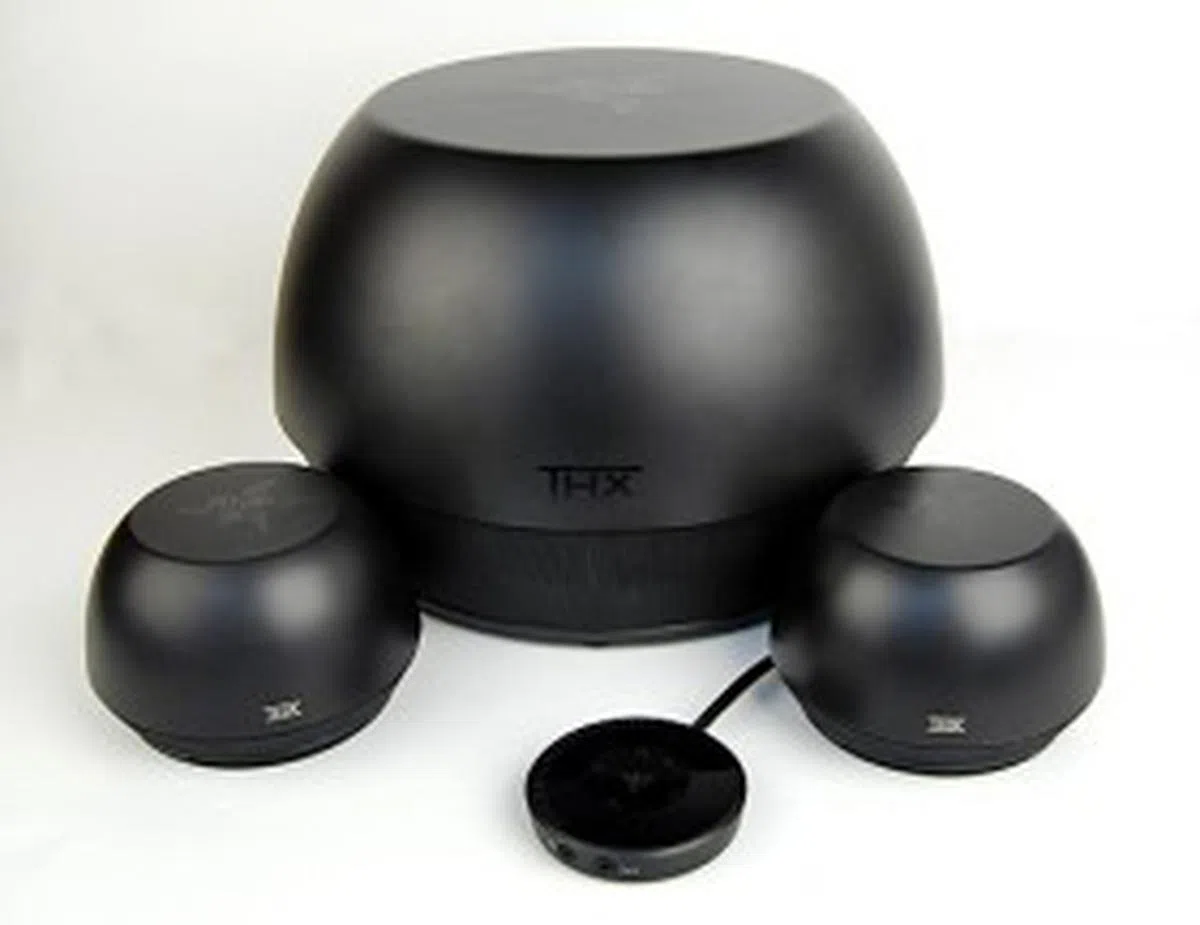 |  |
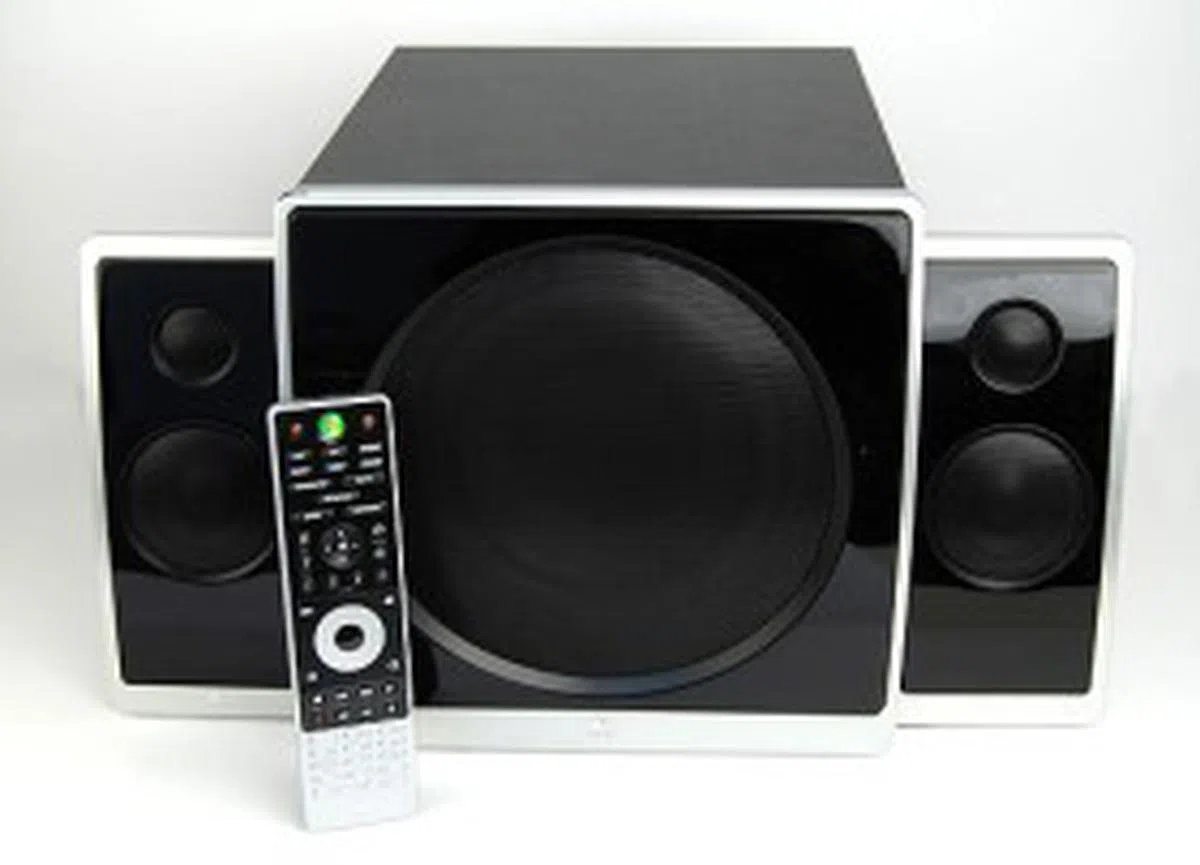 |  |
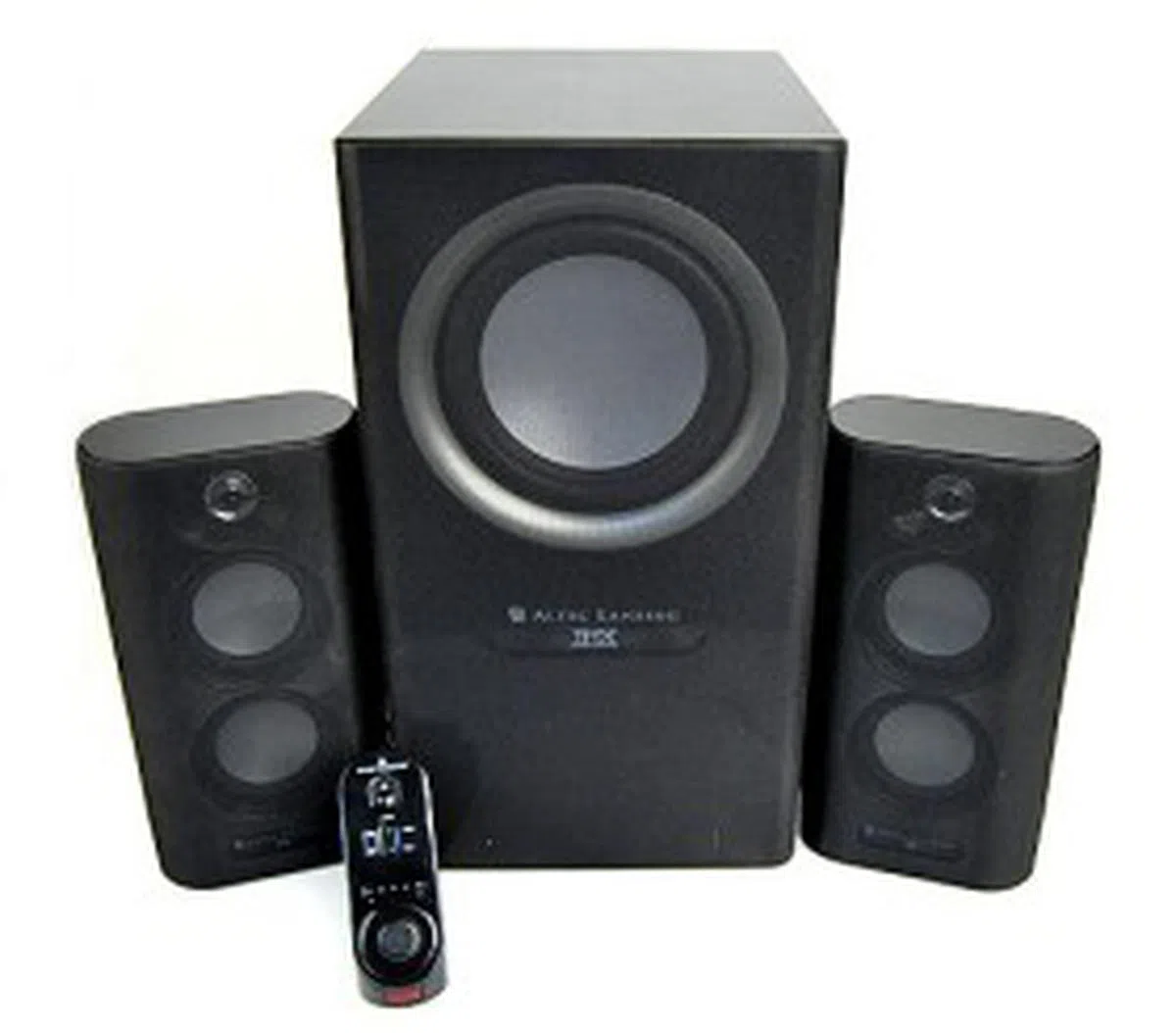 |  |
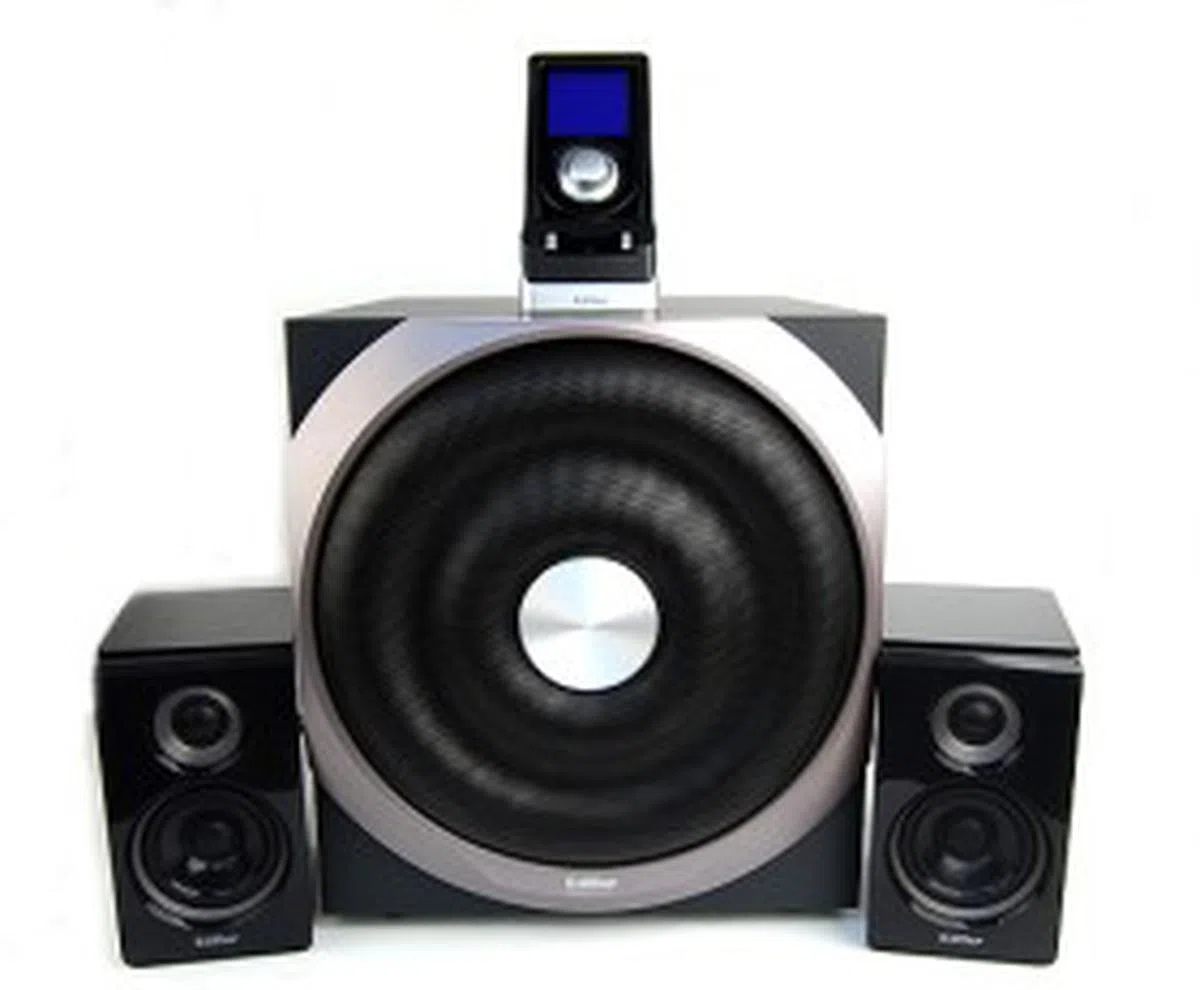 |  |
However, as all audiophiles would know, don't take our word for it. The best way to decide which system is right for you, is to take a listen to them for yourselves. But, you'll be doing yourself a great disfavor should you choose to ignore the Klipsch just because it's an old speaker model.
Another highlight we would like to mention here is that the speaker systems from Bose, Logitech and Razer in this shootout are all equipped with pseudo surround sound capabilities, either via special digital circuitry processing or from the inherent speaker design and these naturally cost more than the rest. However, if you choose to have such a feature, then your choice is narrowed down to one of these three depending on your preferences. Happy shopping on your next 2.1 multimedia speaker system!
Our articles may contain affiliate links. If you buy through these links, we may earn a small commission.
